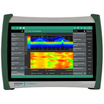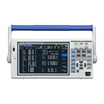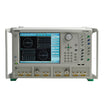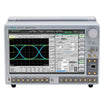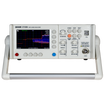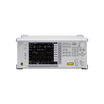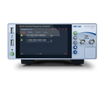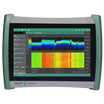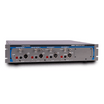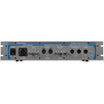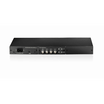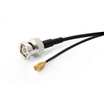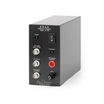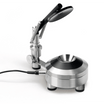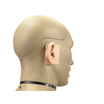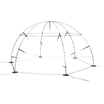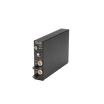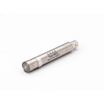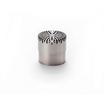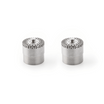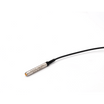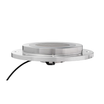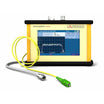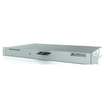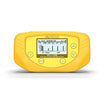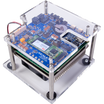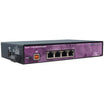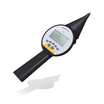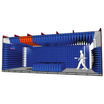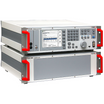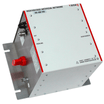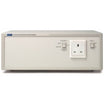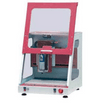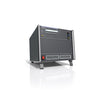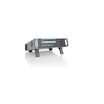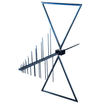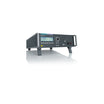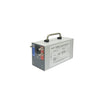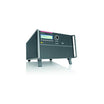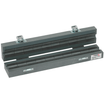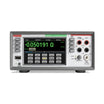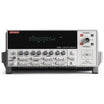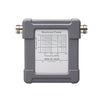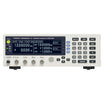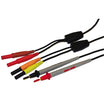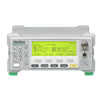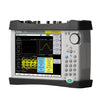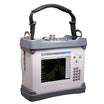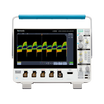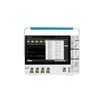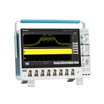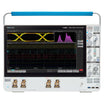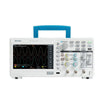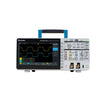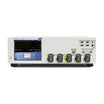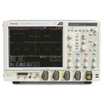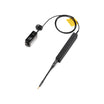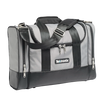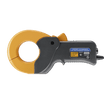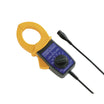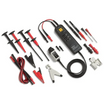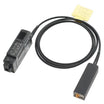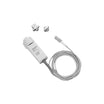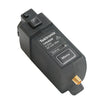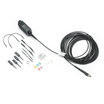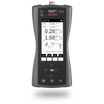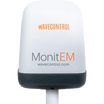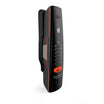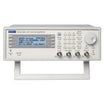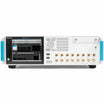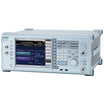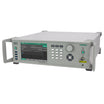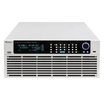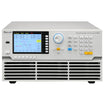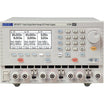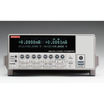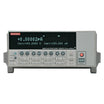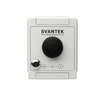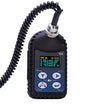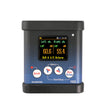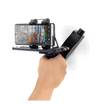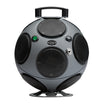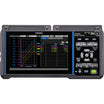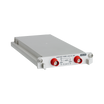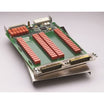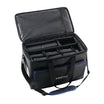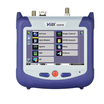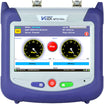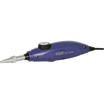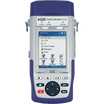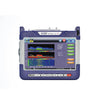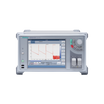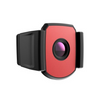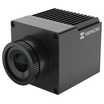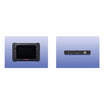
DEMO - Svantek SV 971A Sound Level Meter
Use our chat for personal support. Or contact us via +45 31 33 18 19 or salg@GOmeasure.dk
Discover the possibilities
More information
Description
The SV 971A is a Class 1 Sound Level Meter and Sound Exposure Meter designed for professional use, recognized for its compact size, lightweight, and inclusion of advanced features like a new microphone with a large dynamic range of 120 dB and low-power Bluetooth® connectivity for mobile application integration. The 971 series offers a wide LAeq measurement range (24 to 137 dB linear measurement range, with a Peak of 140 dB) in a single range, ensuring accuracy and ease of use for professionals in the field. Additionally, the device adds new features like RT 60 and STIPA measurements for reverberation time and speech intelligibility, supported by a separate mobile application.
Additionally, it includes a range of options and accessories to extend its capabilities, along with software support for comprehensive noise level analysis and reporting, catering to health and safety specialists’ needs. The SV 971A is equipped to handle a broad spectrum of noise measurement tasks, making it suitable for occupational noise measurements and basic environmental measurements, real-time frequency analysis, audio recording, and time-history logging, all within a device that emphasizes power efficiency and user convenience.
What is a Class 1 Sound Level Meter?
A Class 1 (or Type 1) Sound Level Meter is defined as a measuring device that conforms to the International Electrotechnical Commission (IEC) standard IEC 61672-1:2013, as well as its European equivalents (BS EN 61672-1:2003 in the UK and DIN EN 61672-1:2014 in Germany). These standards outline specific performance criteria that the decibel meter must meet, including a defined linear operating range, frequency response, and the ability to operate accurately across a specified temperature range. These criteria ensure the device’s precision and reliability for measuring sound levels in various professional applications, making it suitable for use in environments where accurate sound level measurement is critical.
Choosing the Right Sound Level Meter
Understanding Measurement Standards
Measurement standards like ISO, OSHA, MSHA, or ACGIH dictate the specifications required for sound level meters based on the International Electrotechnical Commission (IEC) or the American National Standards Institute (ANSI) standards, distinguishing between Class 1 and Class 2 meters. By understanding these measurement standards, one can determine the necessary instrument specifications for their specific application. The SV 971A, compliant with both IEC and ANSI standards for Class 1, inherently meets and exceeds the requirements for Class 2 meters due to its higher precision and wider operational capabilities. This versatility makes it a suitable choice for a broad range of applications, from occupational noise measurement to environmental noise assessment, adhering to the diverse requirements set by the aforementioned measurement standards.

Octave Band Sound Level Meter
Sound frequency analysis in 1/1 and 1/3 octave bands filters
An Octave Band Sound Level Meter, such as the SV 971A, is designed to analyze sound frequencies in real-time across 1/1 and 1/3 octave bands, fulfilling the IEC 61672 performance standards. This capability allows for detailed frequency analysis, which is essential in various acoustic studies and noise control applications. Beyond its octave band analysis features, the SV 971A also offers additional functionalities like the ability to measure and log data over selectable periods and record high-quality WAV audio files. These features make it a versatile tool for comprehensive sound analysis, catering to a wide range of professional needs.
Sound Level Meter App
Enhancing Acoustic Measurements
The Sound Level Meter App is a mobile application designed to enhance the functionality of a sound level meter by serving as an extension of the meter's user interface. Through a connection with the sound level meter, this app allows users to perform calculations for sound insulation in accordance with ISO 16283, providing both visual results and detailed reports that meet ISO requirements. Additionally, the app includes support for STIPA measurements, further expanding its utility in assessing speech intelligibility. This integration ensures a more user-friendly experience, enabling efficient and accurate acoustic evaluations directly from a smartphone or tablet.

Accurate Noise Level Measurement
Standards, Parameters, and Calibration
To accurately measure noise levels, adherence to specific measurement standards and consideration of crucial parameters are essential. For workplace noise evaluations, follow guidelines outlined in ISO 9612, OSHA, MSHA, or ACGIH. Sound insulation should be measured in accordance with ISO 16283, while speech transmission indexes for public address systems must align with IEC 60268 standards. Prior to conducting measurements, it is important to select the appropriate fast or slow time weightings based on the nature of the noise being measured. Additionally, the meter's calibration should be checked with an acoustic calibrator, which is a critical step that should be performed before making any measurements. These preparatory actions ensure the reliability and consistency of sound pressure level assessments across different scenarios.

Class 1 vs. Class 2 Sound Level Meters
Understanding Accuracy and Applications
The most accurate sound level meters are Class 1 devices, which comply with the IEC 61672 international standard. This standard specifies the technical requirements and accuracy levels that sound level meters must meet. Class 1 meters are designed for applications requiring the highest precision, such as environmental noise monitoring and detailed acoustic analysis, distinguishing them from Class 2 meters, which are used for more general noise assessments. Adherence to IEC 61672 ensures the reliability and consistency of measurements critical for legal, occupational health, and environmental purposes.

Sound Level Meter Software
Firmware, PC Analysis, and Mobile Integration
Sound level meter software is a comprehensive package that includes firmware, software for PC, and a mobile application, each serving a distinct function. The firmware, integral to the meter, facilitates core functions like data logging to the SD card and the time history of noise levels, enabling the meter to perform accurate measurements and compile the results. Upon transferring these results to a PC, the accompanying software supports detailed analysis with features such as graphing noise levels, re-calculations, and generating reports, providing a deeper insight into the data collected. Additionally, the mobile app extends the meter's functionality to smartphones, offering an enhanced user interface for on-the-go data logging, real-time noise level graphs, and the ability to integrate photographs with measurement data. This synergy between firmware, PC software, and mobile application ensures a versatile and user-friendly experience for sound level monitoring and analysis.

Sound Level Meter for Classroom
Room Acoustics Parameters Measurements
A sound level meter for a classroom is a sound measuring device that meets IEC 61672 standards for accuracy and is capable of measuring room acoustics parameters such as reverberation time RT60 and speech intelligibility STIPA. The SV 971A is a sound level meter that can be used in a classroom. It meets IEC 61672 standards for accuracy and uses a sound level meter app for the measurement of room acoustics parameters such as reverberation time RT60 and speech intelligibility STIPA.

SV 971A Autocalibration
Streamlining Accuracy with Simplified Calibration
Autocalibration in the SV 971A sound level meter simplifies the calibration process, making it more efficient and user-friendly. This feature enables users to calibrate the meter by merely placing the calibrator over the microphone. During this process, the meter automatically detects the calibrator's presence and initiates the calibration sequence. The calibration data, including the date, time, and calibration level, are then automatically logged into a file within the meter's memory. This not only ensures the accuracy and reliability of the sound level measurements but also provides an auditable trail of calibration records, enhancing the credibility and compliance of the measurement data. Autocalibration thus streamlines the preparation for precise sound level monitoring, eliminating manual entry errors and saving time for professionals in the field.

Documents
Datasheet:
Options
Video
The SV 971A is a Class 1 Sound Level Meter and Sound Exposure Meter designed for professional use, recognized for its compact size, lightweight, and inclusion of advanced features like a new microphone with a large dynamic range of 120 dB and low-power Bluetooth® connectivity for mobile application integration. The 971 series offers a wide LAeq measurement range (24 to 137 dB linear measurement range, with a Peak of 140 dB) in a single range, ensuring accuracy and ease of use for professionals in the field. Additionally, the device adds new features like RT 60 and STIPA measurements for reverberation time and speech intelligibility, supported by a separate mobile application.
Additionally, it includes a range of options and accessories to extend its capabilities, along with software support for comprehensive noise level analysis and reporting, catering to health and safety specialists’ needs. The SV 971A is equipped to handle a broad spectrum of noise measurement tasks, making it suitable for occupational noise measurements and basic environmental measurements, real-time frequency analysis, audio recording, and time-history logging, all within a device that emphasizes power efficiency and user convenience.
What is a Class 1 Sound Level Meter?
A Class 1 (or Type 1) Sound Level Meter is defined as a measuring device that conforms to the International Electrotechnical Commission (IEC) standard IEC 61672-1:2013, as well as its European equivalents (BS EN 61672-1:2003 in the UK and DIN EN 61672-1:2014 in Germany). These standards outline specific performance criteria that the decibel meter must meet, including a defined linear operating range, frequency response, and the ability to operate accurately across a specified temperature range. These criteria ensure the device’s precision and reliability for measuring sound levels in various professional applications, making it suitable for use in environments where accurate sound level measurement is critical.
Choosing the Right Sound Level Meter
Understanding Measurement Standards
Measurement standards like ISO, OSHA, MSHA, or ACGIH dictate the specifications required for sound level meters based on the International Electrotechnical Commission (IEC) or the American National Standards Institute (ANSI) standards, distinguishing between Class 1 and Class 2 meters. By understanding these measurement standards, one can determine the necessary instrument specifications for their specific application. The SV 971A, compliant with both IEC and ANSI standards for Class 1, inherently meets and exceeds the requirements for Class 2 meters due to its higher precision and wider operational capabilities. This versatility makes it a suitable choice for a broad range of applications, from occupational noise measurement to environmental noise assessment, adhering to the diverse requirements set by the aforementioned measurement standards.

Octave Band Sound Level Meter
Sound frequency analysis in 1/1 and 1/3 octave bands filters
An Octave Band Sound Level Meter, such as the SV 971A, is designed to analyze sound frequencies in real-time across 1/1 and 1/3 octave bands, fulfilling the IEC 61672 performance standards. This capability allows for detailed frequency analysis, which is essential in various acoustic studies and noise control applications. Beyond its octave band analysis features, the SV 971A also offers additional functionalities like the ability to measure and log data over selectable periods and record high-quality WAV audio files. These features make it a versatile tool for comprehensive sound analysis, catering to a wide range of professional needs.
Sound Level Meter App
Enhancing Acoustic Measurements
The Sound Level Meter App is a mobile application designed to enhance the functionality of a sound level meter by serving as an extension of the meter's user interface. Through a connection with the sound level meter, this app allows users to perform calculations for sound insulation in accordance with ISO 16283, providing both visual results and detailed reports that meet ISO requirements. Additionally, the app includes support for STIPA measurements, further expanding its utility in assessing speech intelligibility. This integration ensures a more user-friendly experience, enabling efficient and accurate acoustic evaluations directly from a smartphone or tablet.

Accurate Noise Level Measurement
Standards, Parameters, and Calibration
To accurately measure noise levels, adherence to specific measurement standards and consideration of crucial parameters are essential. For workplace noise evaluations, follow guidelines outlined in ISO 9612, OSHA, MSHA, or ACGIH. Sound insulation should be measured in accordance with ISO 16283, while speech transmission indexes for public address systems must align with IEC 60268 standards. Prior to conducting measurements, it is important to select the appropriate fast or slow time weightings based on the nature of the noise being measured. Additionally, the meter's calibration should be checked with an acoustic calibrator, which is a critical step that should be performed before making any measurements. These preparatory actions ensure the reliability and consistency of sound pressure level assessments across different scenarios.

Class 1 vs. Class 2 Sound Level Meters
Understanding Accuracy and Applications
The most accurate sound level meters are Class 1 devices, which comply with the IEC 61672 international standard. This standard specifies the technical requirements and accuracy levels that sound level meters must meet. Class 1 meters are designed for applications requiring the highest precision, such as environmental noise monitoring and detailed acoustic analysis, distinguishing them from Class 2 meters, which are used for more general noise assessments. Adherence to IEC 61672 ensures the reliability and consistency of measurements critical for legal, occupational health, and environmental purposes.

Sound Level Meter Software
Firmware, PC Analysis, and Mobile Integration
Sound level meter software is a comprehensive package that includes firmware, software for PC, and a mobile application, each serving a distinct function. The firmware, integral to the meter, facilitates core functions like data logging to the SD card and the time history of noise levels, enabling the meter to perform accurate measurements and compile the results. Upon transferring these results to a PC, the accompanying software supports detailed analysis with features such as graphing noise levels, re-calculations, and generating reports, providing a deeper insight into the data collected. Additionally, the mobile app extends the meter's functionality to smartphones, offering an enhanced user interface for on-the-go data logging, real-time noise level graphs, and the ability to integrate photographs with measurement data. This synergy between firmware, PC software, and mobile application ensures a versatile and user-friendly experience for sound level monitoring and analysis.

Sound Level Meter for Classroom
Room Acoustics Parameters Measurements
A sound level meter for a classroom is a sound measuring device that meets IEC 61672 standards for accuracy and is capable of measuring room acoustics parameters such as reverberation time RT60 and speech intelligibility STIPA. The SV 971A is a sound level meter that can be used in a classroom. It meets IEC 61672 standards for accuracy and uses a sound level meter app for the measurement of room acoustics parameters such as reverberation time RT60 and speech intelligibility STIPA.

SV 971A Autocalibration
Streamlining Accuracy with Simplified Calibration
Autocalibration in the SV 971A sound level meter simplifies the calibration process, making it more efficient and user-friendly. This feature enables users to calibrate the meter by merely placing the calibrator over the microphone. During this process, the meter automatically detects the calibrator's presence and initiates the calibration sequence. The calibration data, including the date, time, and calibration level, are then automatically logged into a file within the meter's memory. This not only ensures the accuracy and reliability of the sound level measurements but also provides an auditable trail of calibration records, enhancing the credibility and compliance of the measurement data. Autocalibration thus streamlines the preparation for precise sound level monitoring, eliminating manual entry errors and saving time for professionals in the field.


